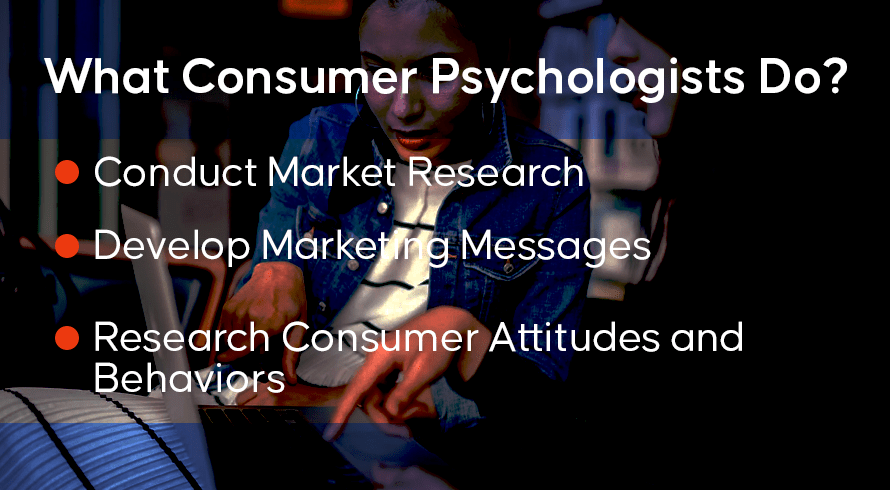Inquivix HQ
1-903, 18 Eonju-ro 146-gil,
Gangnam-gu, Seoul, Korea
06057
The similarity effect, or similarity attraction effect, refers to the attitude of humans as social beings being attracted more to other human beings with higher similarities than differences in personality. As the saying goes, “Birds of a feather flock together.” This goes to explain the similarity attraction effect between people who share similar attitudes. Having said this, the similarity attraction effect even influences consumer buying behavior. If you’re in doubt, dive deeper into the social psychology of a consumer and its effects on buying behavior as explained below!

‘How does the similarity attraction effect relate to consumer behavior?’The answer is simple. The personality traits of an individual in relation to their family strongly resonate with how they were brought up. These personality traits correlate with their buying patterns, and they continue to purchase products and services that their family purchases. Until the need to break this pattern proves itself, the purchasing behavior generally remains the same. This is also true of the reference group an individual belongs to. Be it friends or a social circle an individual belongs to, similarity effects tend to navigate their preferences towards a similar ground.
Although this attraction means similar attitudes are shown in buying behavior, the individuals are not bound by strictly physical attraction. It is rather an effect of social psychology, where interpersonal attraction, a positive personality trait, impacts the cognitive processes and behavioral tendencies of an individual to align with those of their social group. While physical attractiveness and a positive relationship with romantic partners also have the same effect, it is not solely related to physical attributes or close relationships. Perceived similarity, regardless of close relationships, is what determines the consumer’s buying behavior.
The Science of Consumer Behavior
The science of consumer behavior is the theoretical psychology of the process that a consumer undertakes to purchase a product or service. It studies why a consumer purchases what they choose to purchase, what factors influence the decision, and what degree of influence the factors may have had on the consumer behavior. Psychological factors, social factors, cultural factors, economical factors, and personal factors with many sub-factors are classified to be influential in consumer behavioral sciences.
Personal factors like marital satisfaction, activity preferences, and even having an individual’s own dedicated physical space play an important role in their need for and motivation to make a purchase decision. While the science of consumer behavior has studied the widespread influence of many determinants on an individual’s buying behavior, it is clear that many of these determinants are interconnected and in social psychology can be classified under the similarity attraction effect.
Consumer Science Behaviour and the Similarity Attraction Effect
Although “opposites attract” is a popular term, people are still likely to show more similarities with the phrase “birds of a feather flock together” than “opposites attract”. While that may be true about the north and south poles, people are generally attracted to others with similarities. That being said, having similar personality traits, not strictly physical attraction, despite individual differences such as gender differences, different tastes in food, music, and even romantic relationships, does not change the similarity effects of buying behavior.
People all have individuality and distinct personality traits but the similarity attraction effect does not defy that. Previous findings in social psychology studies simply state that the similarity effects develop a similar buying behavior in people of the same social group but they do not have to share the exact same personality traits.
What Consumer Psychologists Do?
Consumer psychologists don’t need to conduct extensive laboratory experiments and provide empirical evidence derived from them to prove the impact of the similarity attraction effect. Social psychology has many answers and using this understanding, consumer psychologists put together laboratory experiments in business-industry style to really understand the similarity attraction effect, why it influences consumer behavior, and how this can be utilized efficiently by marketers.

To develop a clear understanding, consumer psychologists outline their industry-styled laboratory experiments by starting off with extensive market research about consumers and their preferences, developing marketing messages, and researching consumer attitudes and their behavior. An ideal consumer psychologist will put together all their learnings in human behavior, social psychology, marketing, culture, personality similarity, and other learnings to best understand and help businesses reach out to their consumers after understanding their purchase decision-making process.
Conduct Market Research
Consumer psychologists conduct market research to find out who the typical target audience would be for a particular product or service. To reach out to your target audience, you first need to understand what appeals to them. To understand and identify this, they would need to know the audience’s age, gender, social status, family, and cultural background. Understanding the personal profile of a consumer will thus help their present study gain the right traction.
Once a consumer psychologist has an idea of what a typical consumer looks like, they can research products, services, and marketing campaigns that appeal to the target audience. This research will help consumer psychologists understand how different the personality traits of a consumer are with regard to their purchasing behavior from others with similar attitudes. It can also be used to understand if personality similarity proves that consumers with the similarity attraction effect are indeed inclined towards the same product.
Develop Marketing Messages
Another aspect that can be researched is what kind of marketing message or campaign is being shared within social groups and why they are shared. This type of research will provide insight on which marketing campaigns have a higher conversion rate, which will be further shared by consumers themselves, and if personality similarity has a role to play in these instances.
Research Consumer Attitudes and Behaviors
Learning about consumers’ attitudes and behaviors is pivotal to understanding their needs, catering towards them, and releasing highly targeted and specific marketing campaigns, products, and services. You need to know what they need and want, and what changes this behavior for them to shift to another product or service. This research also shows that the influence of the similarity attraction effect on consumer behavior and attitudes can be understood.
Consumer psychology uses tools like surveys, direct observations, focus groups, questionnaires, experiments, and other gauging methods to understand the demographics of the target market, their income, their motivations for making the purchase decision, and their reasons for returning or not returning to make the same purchase decision. Consumer psychologists can thus use this meta-analysis to provide businesses with useful insights on how they can use this information to target their audience with products, services, and marketing strategies that guarantee conversion rates.
How Do Consumers and Organizations Make Buying Decisions?
Consumers and organizations generally go by a step-by-step process to settle on a buying decision. They first recognize they have a need for a product or service. For example, hunger produces the need for food. Once they recognize this need, they look for information on what they would like to eat. They might recall a good pizza they had last week which they are craving for, find out a great buy-one-get-one-free offer on Tacos, or simply want to try out something new. With all this information, they will need to evaluate their options, and finally settle on something within their preference, or budget and then make the buying decision. They purchase the tacos and then depending on their overall experience with the ordering process and how great the tacos were they display their post-purchase behavior.

The Buying Decision Process
The simple process above is basically recognizing one’s needs, information search, evaluation of options, purchase, and post-purchase behavior. While many factors impact this process, the end result is pretty much the same. However, let’s consider a colleague who wanted to eat with the consumer but preferred to have pizza. Social psychology says although you would assume the consumer would likely have the pizza out of politeness, that is not the case. The similarity attraction effect will increase the craving for the pizza, so much so that the consumer is now more likely to order the pizza than the tacos.
Buying decisions also depend on gender differences; generally, women tend to enjoy the shopping experience more than men. While romantic relationships do not have to be impacted by similarity effects, you might change your purchase decision depending on what your romantic partner wants, which is a personal preference. There is a large difference between the similarity attraction effect and choosing what somebody else likes to please them. However, this is also one main effect of how a personal factor changes the way that a buying decision can be made.
What Is the Relationship Between Commerce and Economics?
Commerce is the study of products and services supplied by producers to consumers, it analyzes and practices the concept of exchange, is limited to business, and therefore has a limited scope of the evaluation. However, economics consists of a much broader aspect, studying individuals, corporations, society use resources, the influence of enterprises, government legislations, banks, and also investigates the labor sector and public policies. Economics is not confined to business rather it encompasses production and consumption as well.

While commerce and the economy have differences in the scope of what they deal with, they are essentially tied together with regard to business. In the context of buying and selling, the buyer’s behavior has a significant impact on both commercial and economic fronts. Hence, it is pivotal to understand the consumer’s buying behavior and use the teachings derived from commerce and economics combined with social psychology to understand target markets and maximize ROI by delivering products, services, and marketing campaigns that influence the purchase decision-making process.
What Are Some Interesting Psychological Marketing Tactics?
We all have objectives, and they always start with lead and end with generation. Lead generation drives us to put out better products and services. But getting leads is not as easy as having a great product or service. You first need to have great ways to gain traction. Here are some interesting psychological marketing tactics that you can use to get and retain customers.
The Art of Simply Asking
The easiest way to know what your customers want is… (drumroll*) Asking them! You simply need to find the best resource to ask them what they want and ensure it’s something they will enjoy doing. Don’t ask long, tedious questions and we guarantee you will receive your answers.
Involve Them in the Process
Despite its high level of convenience (requiring only the addition of water before baking), the cake mix did not sell well when it was first introduced. It didn’t make sense until they made a small tweak. Consumers now have to add two ingredients: one egg and water. This involvement in the baking process is a widespread tendency that people tend to look forward to. Implementing this played a key role in the increased sales of the cake mix!
Loss Aversion
Exemplary service, friendliness, and personalization are some of the key ingredients to retaining a consumer. Positive social relations have always increased a consumer’s inclination to choose your business again. They do not want to lose your service. Your personalization for them helps you develop close relationships that help you top their lists in your niche, and they keep returning.
Conclusion
Similarity attraction refers to the influence of a consumer’s social group, culture (socially constructed views), family, and other people-related factors that affect a consumer’s buying behavior. According to social psychology, the reason it does so is that human beings tend to divert their wants according to others who have more similarities with them. Similarity effects tend to change the buyer behavior, whether it is pre-purchase or even post-purchase behavior.
